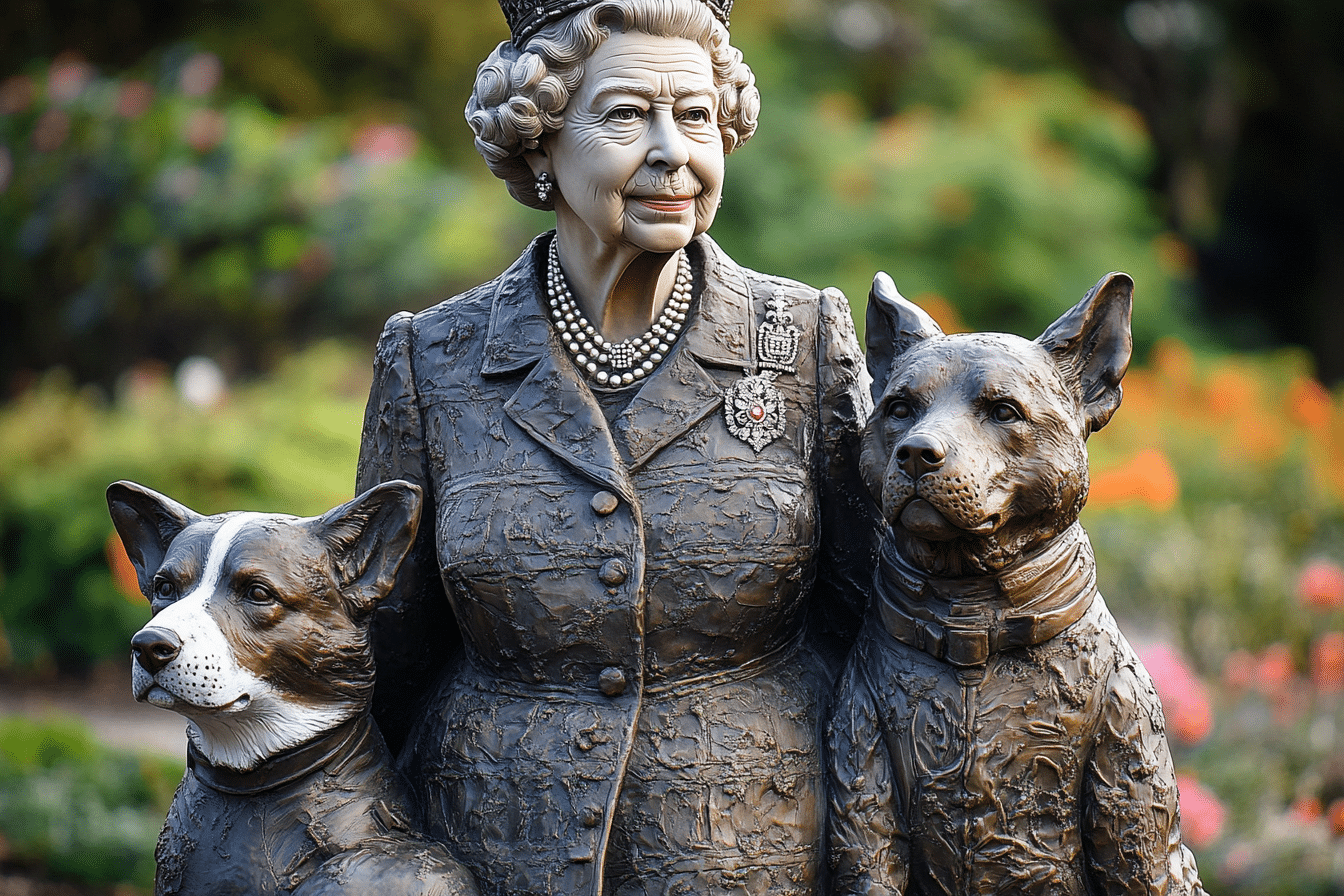A newly unveiled sculpture of Queen Elizabeth II, Prince Philip, and two corgis in Northern Ireland generates diverse opinions among the public. This bronze statue, commissioned by Antrim and Newtownabbey Borough Council and created by artist Anto Brennan, aims to honor the late monarch. Still, it has not escaped criticism for its portrayal.
A Controversial Tribute
The council stated that the statue “has been warmly received by most who have seen it in person,” but social media reactions tell a different story. Comments on a Facebook post revealed mixed feelings, with one user remarking, “Could be anyone.” Another praised the sculpture’s beauty but lamented that it didn’t “look like our late queen or represent how she always dressed.”
The debate escalated on X (formerly Twitter), where images of the sculpture went viral. Users compared it to the infamous bust of Cristiano Ronaldo, leading to quips like, “Even the corgi is confused.” This showcases how quickly public opinion can shift, especially in the digital age.
Artistic Intent vs. Public Perception
Installed in Antrim Castle Gardens, about 19 miles north of Belfast, the sculpture depicts Elizabeth gazing into the distance. She is dressed in a tweed skirt, rubber boots, a checked vest, and a headscarf. A handbag is on her left arm, and her corgis are at her feet. Standing behind her is Prince Philip, with hands behind his back.
While the council acknowledged that “art can sometimes spark diverse opinions,” they expressed satisfaction with how the sculpture “complements its surroundings.” This highlights artists’ ongoing challenge: balancing personal expression with public expectation.
A Legacy of Mixed Artistic Representations
Queen Elizabeth II, who passed away in 2022, was one of the most photographed individuals globally and the subject of countless artistic interpretations. Her legacy includes several controversial depictions, such as a recent portrait of Catherine, Princess of Wales, which garnered praise and criticism, with one critic calling it “intolerably bad.” Similarly, the first official portrait of King Charles III since his coronation also divided opinions.
Even historical pieces have faced scrutiny, such as Lucian Freud’s 2000 portrait of the Queen, which starkly contrasted with romanticized portrayals and stirred debate among critics and the public alike.
The Challenge of Artistic Representation
As the new sculpture of Queen Elizabeth II and Prince Philip continues to draw attention, it exemplifies the ongoing conversation around public art and its role in commemorating historical figures. While some embrace the tribute, others question its accuracy and representation. Ultimately, this debate reflects a broader dialogue about how we honor those who have shaped our history.




